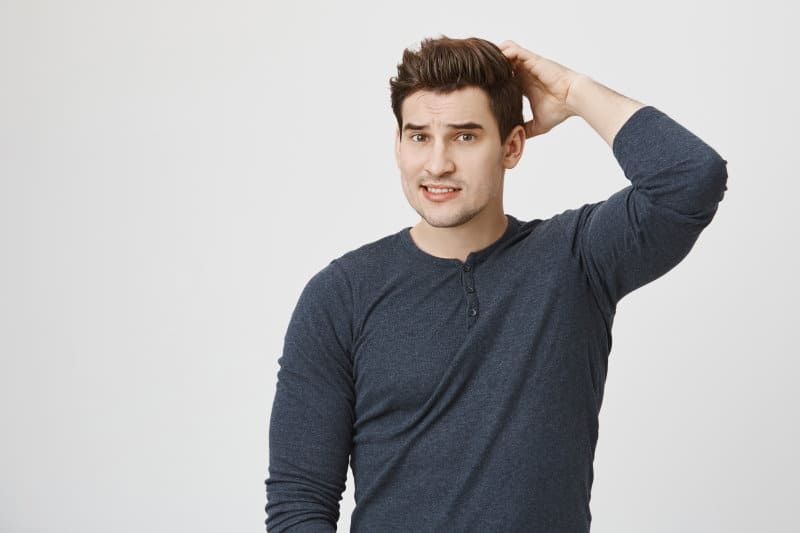It can be difficult trying to grow a full beard that won’t quite materialize. This is doubly true when you’ve already worked your way through multiple at-home options and seen little improvement. A beard transplant procedure might provide hope for full, reliable, attractive facial hair. But is it safe?
Not beating around the bush, beard transplantation is expensive, somewhat painful, and often leads to facial scarring. But the likelihood of serious injury or death from the outpatient procedure is minuscule. It also provides the most permanent and customizable solution to patchy facial hair.
The choice to get elective surgery is never an easy one. We believe we can offer some food for thought and provide you with key facts to make the decision a bit easier.
What’s Missing from your Beard?
If you are considering a beard transplant, then you likely feel that your facial hair is lacking. We all have a vision of the perfect, masculine beard, and perhaps a surgical option is your best bet to achieving it.
Still, as a rule, you should approach this process with a clear sense of exactly what you want to improve. Is there a gap in your mustache? Are your cheeks patchy or see-through? Do you want to fill out the whiskers under your chin?
We recommend you go to your first appointment with a transplant surgeon with a photo of the type of beard you want to have after the procedure. Then you can have a helpful, candid discussion about whether this is possible and how much hair will need to be transplanted.
What Alternatives Have You Tried?
There are many alternatives to beard transplants for guys looking to improve their facial hair game. Before you make an appointment with a physician, here are a few options you’ll want to explore before moving to transplantation.
Beard Supplements
There are plenty of capsules on the market that can give your face follicles a boost. They are essentially multivitamins, rich in B and C complexes, calcium, and zinc. Most also contain niacin and biotin. All of these ingredients have proved useful in encouraging stronger, more durable beard hair. They aren’t magical solutions – nothing is – but they might help on the margins.
Minoxidil
More intensive and also more effective, minoxidil – the drug in Rogaine, among other hair-growth products – is popular with beardsman looking to improve their coverage. Applied topically to the face, this often shows positive results within a couple of months.
Hormone Treatments
You might find, if multiple follicle-fostering tactics have failed, that testosterone and/or DHT therapy can help. It is important that you acquire these hormone supplements from a doctor, not from the weird pills at the bodega. A doctor can prescribe effective, safe medicine and advise you competently about possible side effects.
Wait a Bit Longer
More often than not, the best solution to an incomplete beard is getting older. Many rugged beardsmen sported patchy, see-through facial hair in their teens and twenties. Some guys don’t see complete coverage until they approach middle age. You might feel impatient and dejected now, but before going the transplant route, consider whether your beard might just be in the process of developing.
How Are Beard Transplants Accomplished?
The beard transplant procedure is normally outpatient and performed with local anesthetic. It’s not too different from a regular hair transplant. On average, it takes about eight hours to complete.
The surgeon removes hair from other parts of the body, generally the back of the head near the neck, since that hair more closely resembles facial hair. Sometimes, doctors also harvest follicles from the chest and legs.
These follicles are then transferred to the areas of the face needing coverage. It’s a laborious process, moving one follicle at a time until roughly 2,000 are transplanted.
The recovery period for a beard transplant takes a few weeks, during which time the transplanted hairs will fall out. That’s a normal part of the process. Then – provided the grafts take – hair will start growing on its own.
Why Is a Beard Transplant an Attractive Option?

Overall, beard transplants are the closest thing to a reliable, permanent solution to an incomplete beard. With the other options listed above, you have to hope your body reacts well and the new facial hair is where you want it to be.
With a beard transplant, you and your doctor can pinpoint which areas need coverage and attend to them specifically. As long as your face accepts the new follicles, you can be confident that your bare patches will be filled.
What Are the Risks of a Beard Transplant?
To begin with, this is an invasive option. You will have some scarring at the implantation site. Granted, these marks will be covered by beard hair, but if you choose to shave the area later, they will become noticeable.
Although hair transplant surgeons work hard to match the direction, texture, and appearance of your existing facial hair, and they usually select scalp hair for grafting, the match won’t be perfect. You can expect the implanted hair to have a slightly different consistency. However, you can probably blend it with oil and styling products.
Beard transplants are also pricey – generally, between five and fifteen thousand dollars – and insurance will not cover it.
Finally, if you undergo a beard transplant, you will need to dedicate time to recovery. You can expect some swelling, redness, and discomfort after the procedure.
However, as long as you don’t have an adverse reaction, you’ll be home the same day you have it done. The doctor will prescribe immunosuppressant medicine for the weeks afterward. These drugs have lots of side effects, including elevated blood pressure, swelling of extremities, diarrhea, tremors, and headaches.
With all these warnings, though, you don’t need to worry about significant illness or death from a beard transplant. In the entire history of hair transplantation, only one person has ever died, and there were aggravating factors in that case.
Can You Live With Less-Than-Full Facial Hair?

As safe as beard transplants are, they are an extreme solution to the problem of a thin beard. Additionally, they are permanent in a way you might not appreciate later in your life. Right now, you want a large, full beard, but in the future, you may choose to go bare-cheeked. Are you willing to risk the scarring associated with beard transplants?
Consider if there are other solutions to your less-than-full beard. Can you find a facial hair arrangement that allows you to shave the patchy parts of your beard? Does a see-through beard look that awful on you? Many attractive celebrities like Keanu Reeves, Tom Hardy, and Matthew McConaughey rock thinner facial hair and look great.
The Bottom Line
In general, you don’t need to worry about injury or death if you’re considering a beard transplant. It is a safe, outpatient procedure. On the other hand, beard transplants are an extreme and invasive option for someone looking for fuller facial hair.
We encourage you to take a look at our other articles on stimulating beard growth, especially our deep-dive on supplements.

